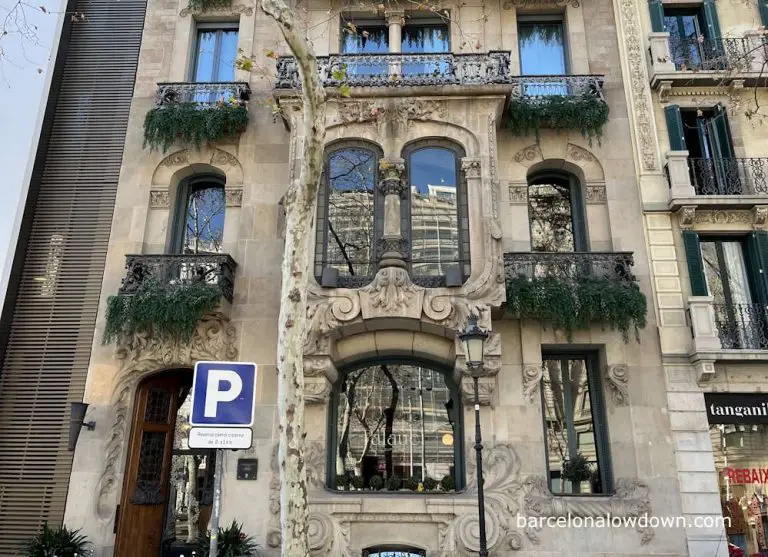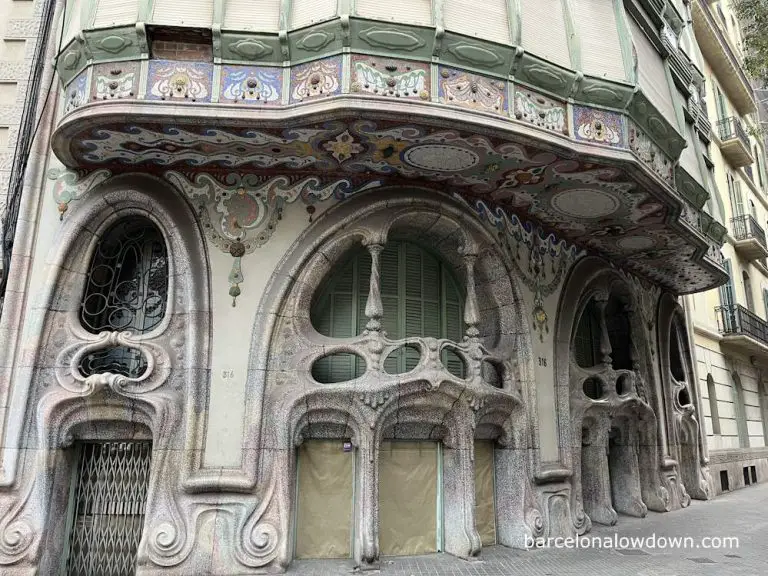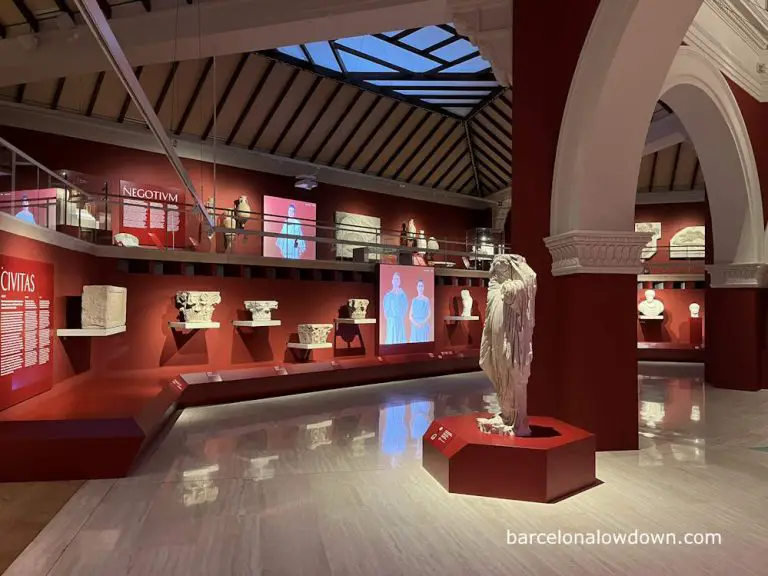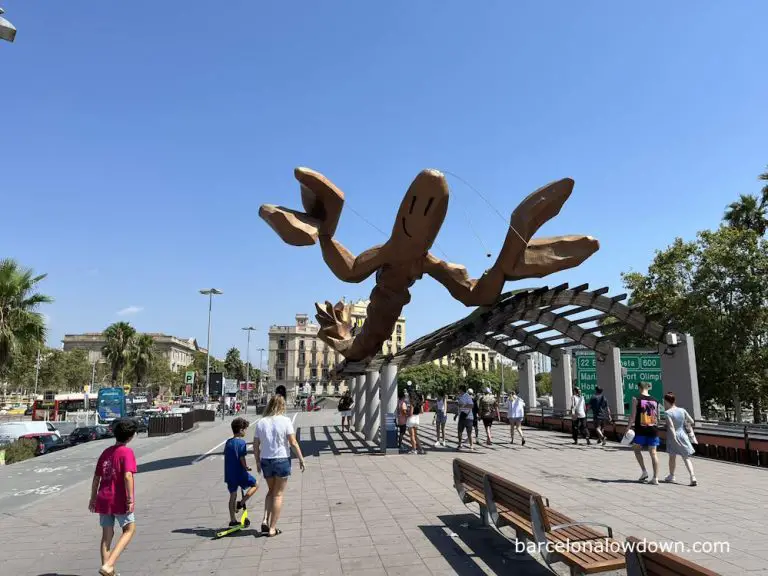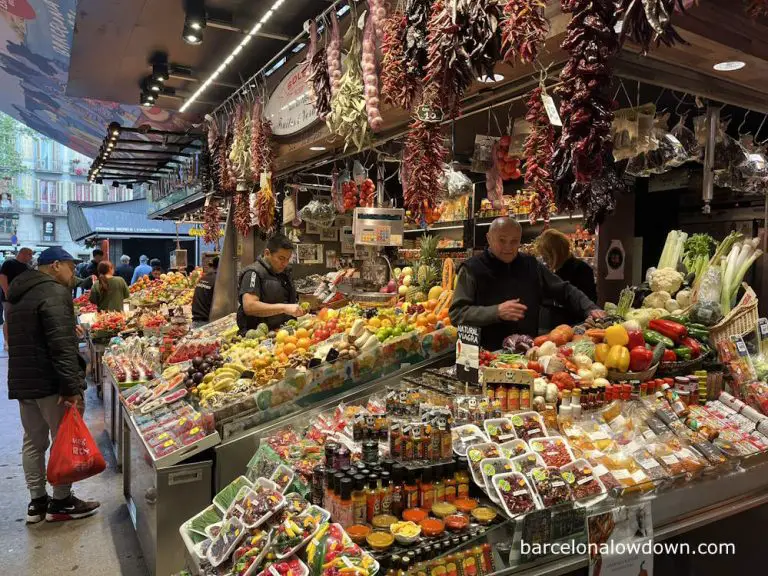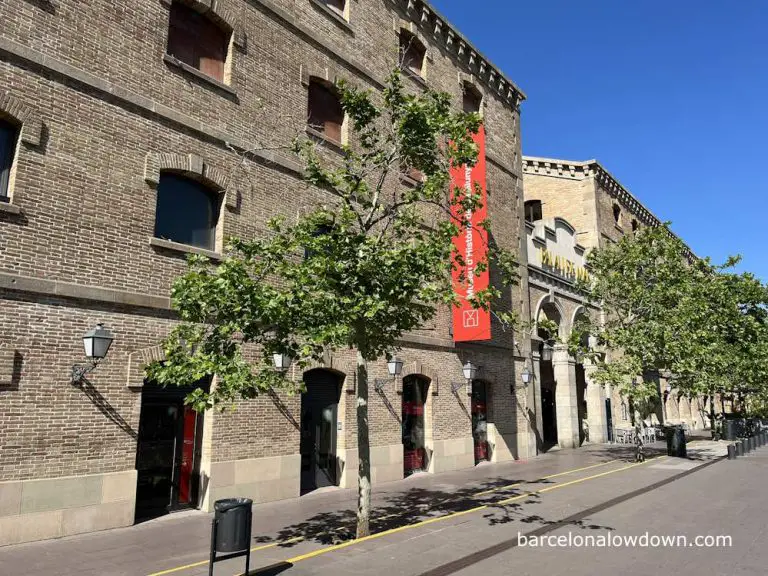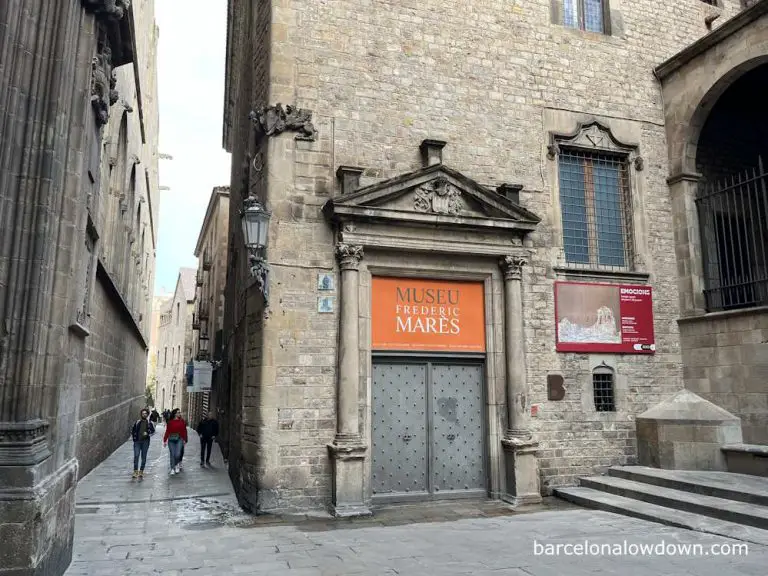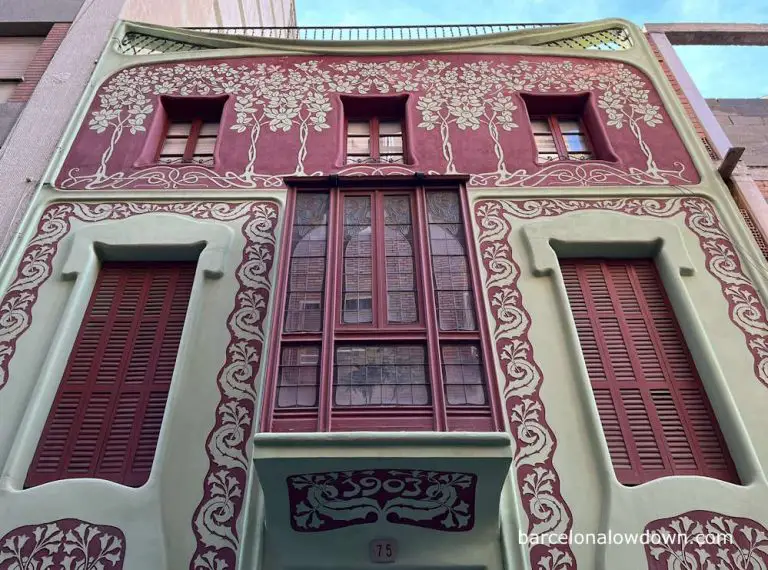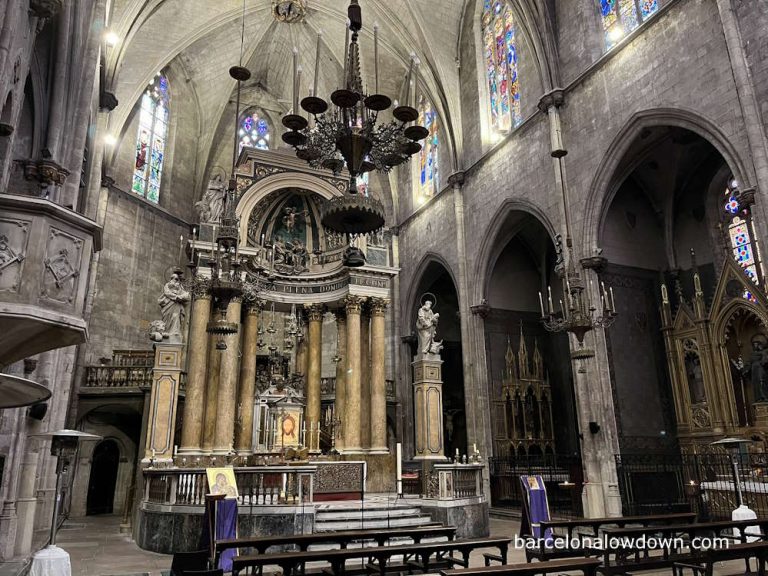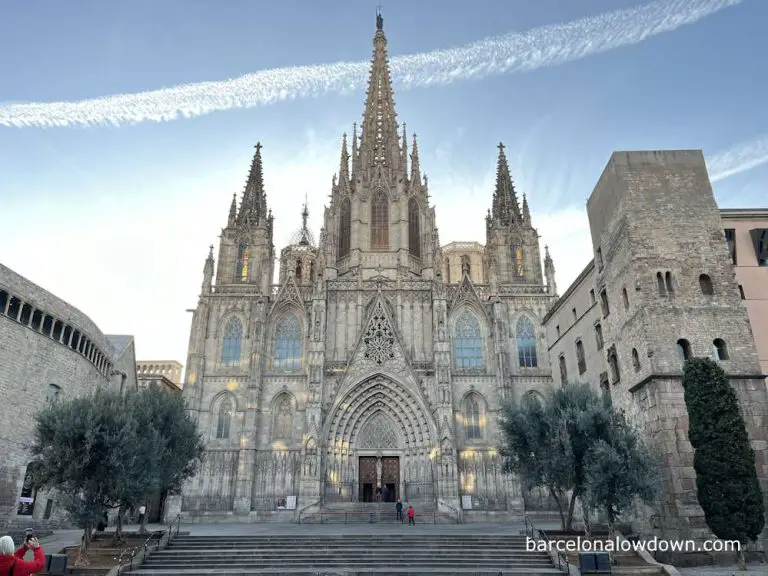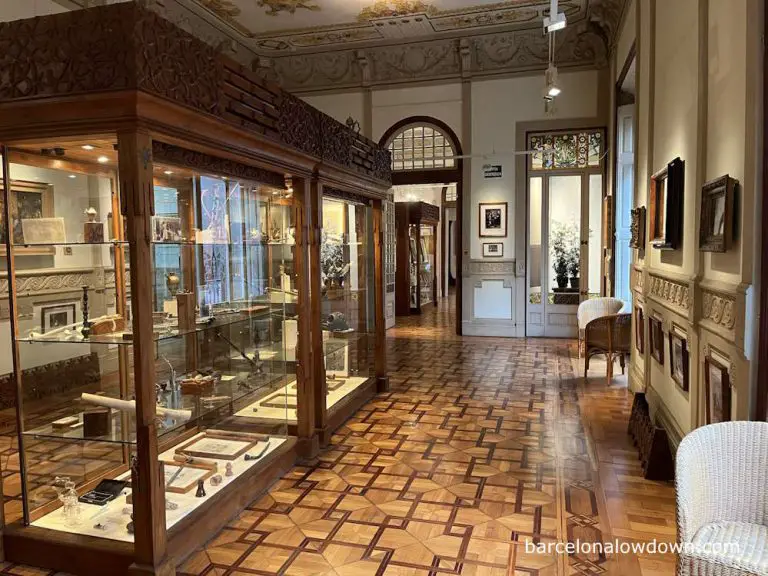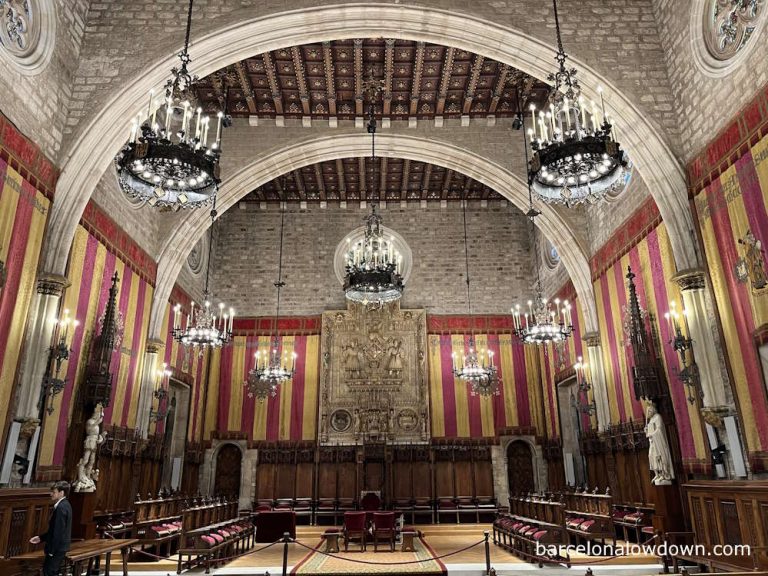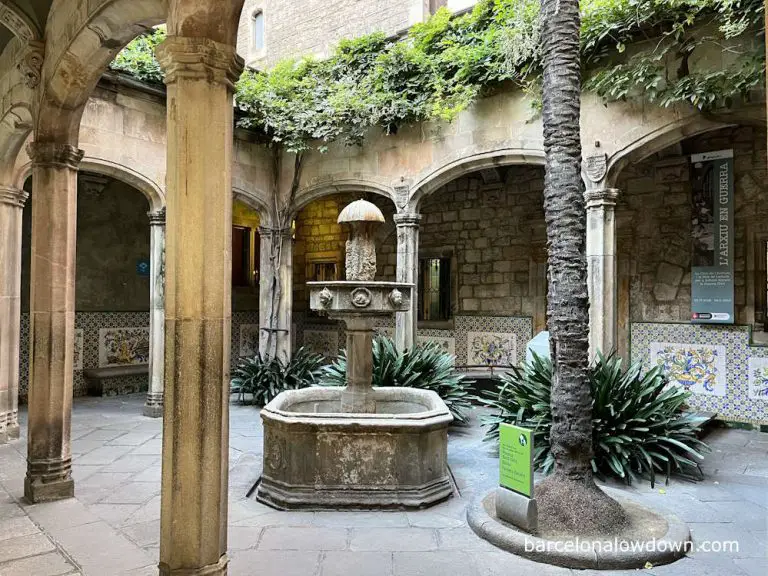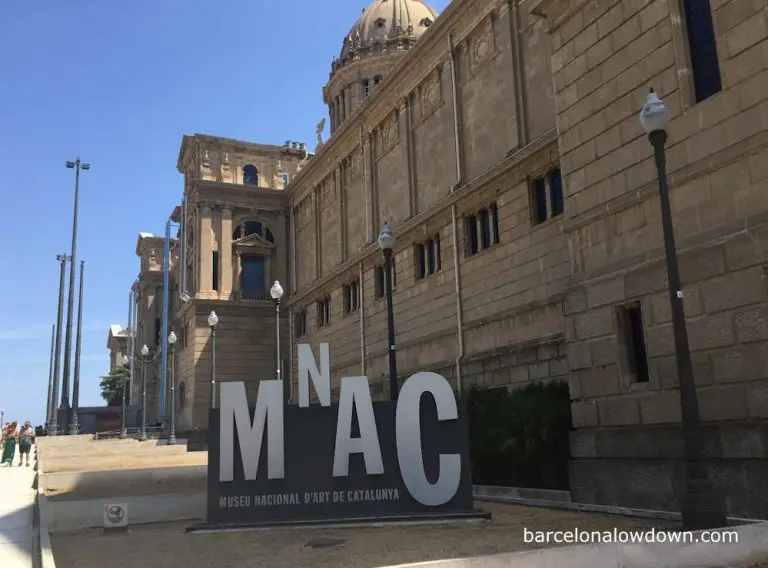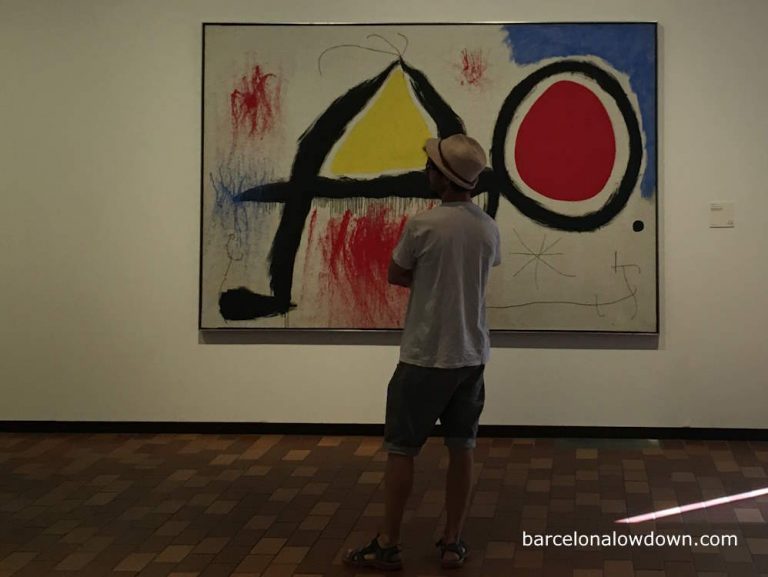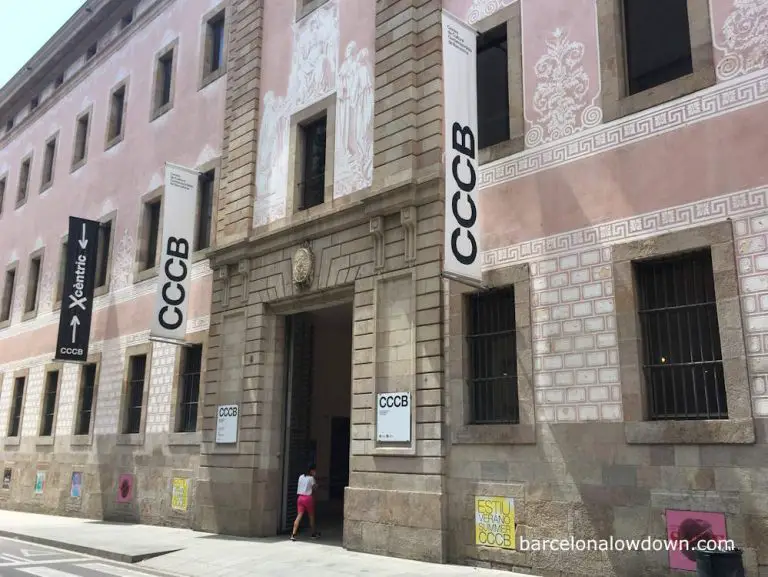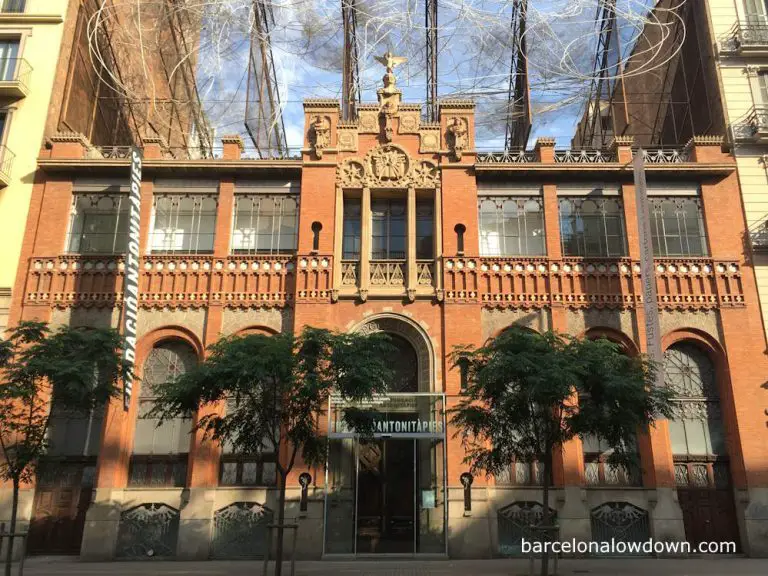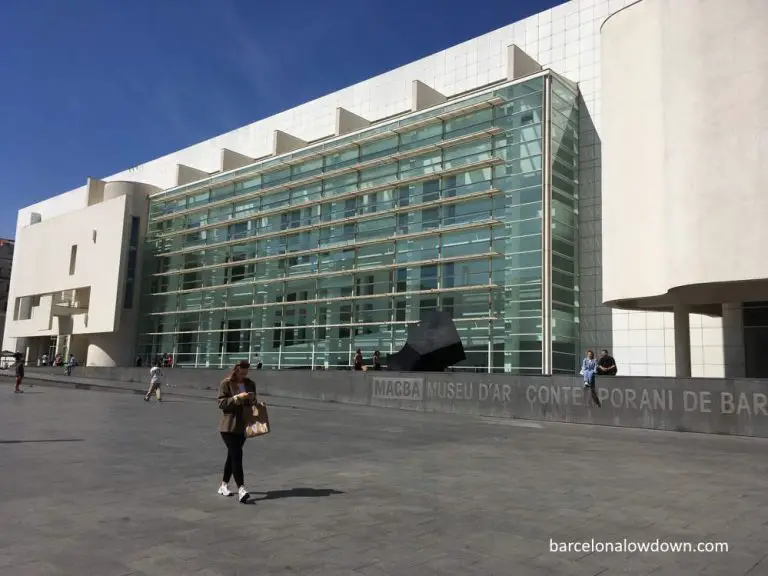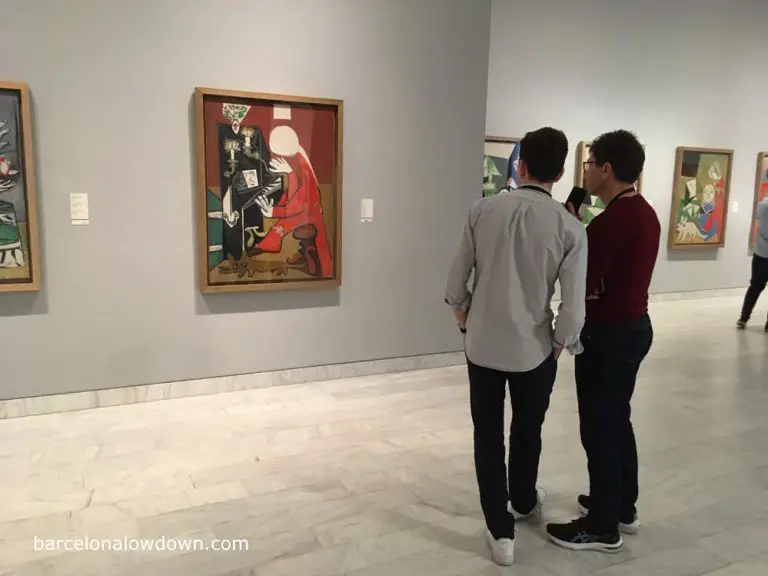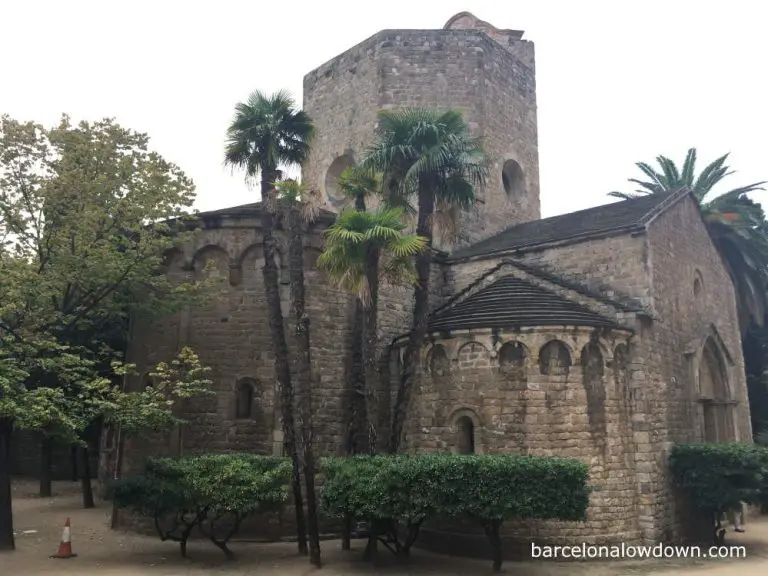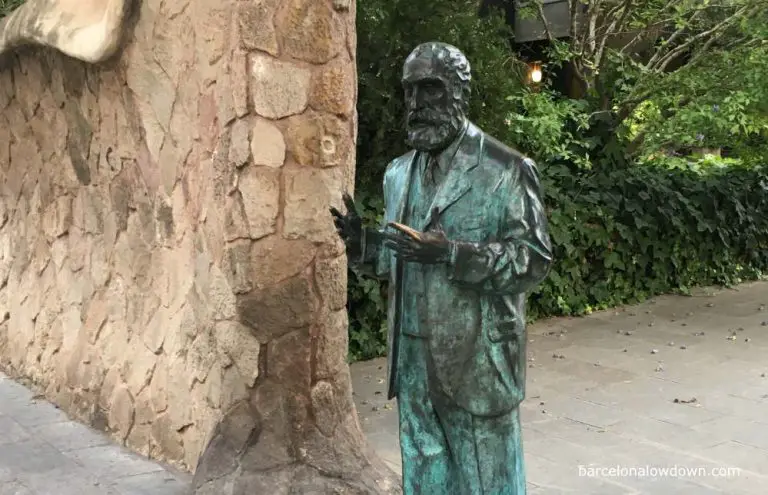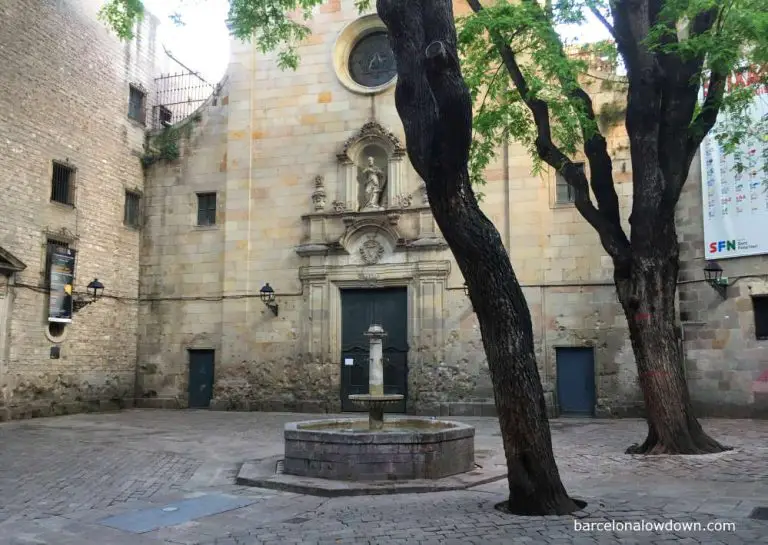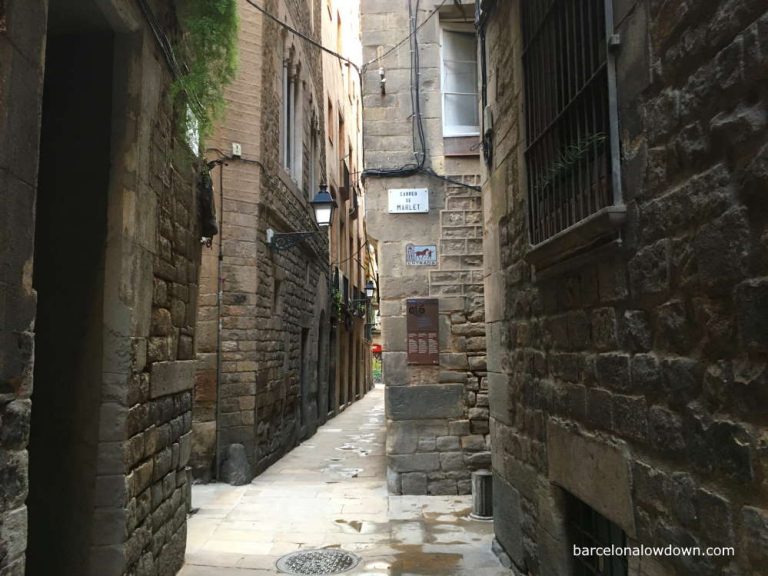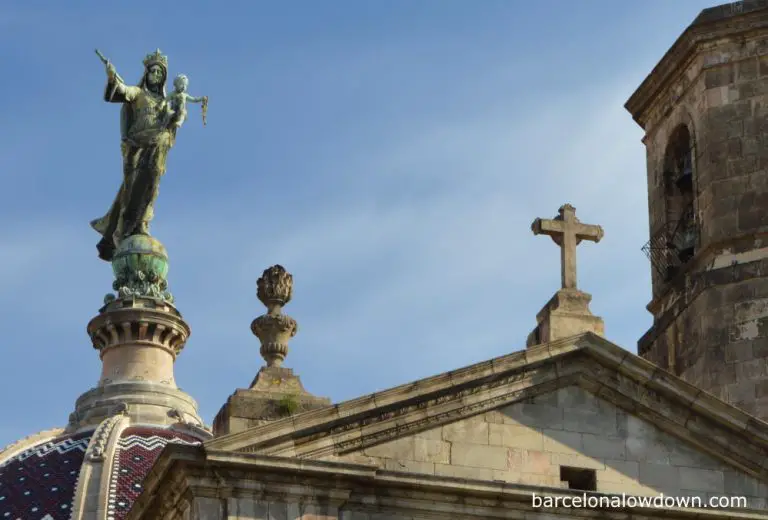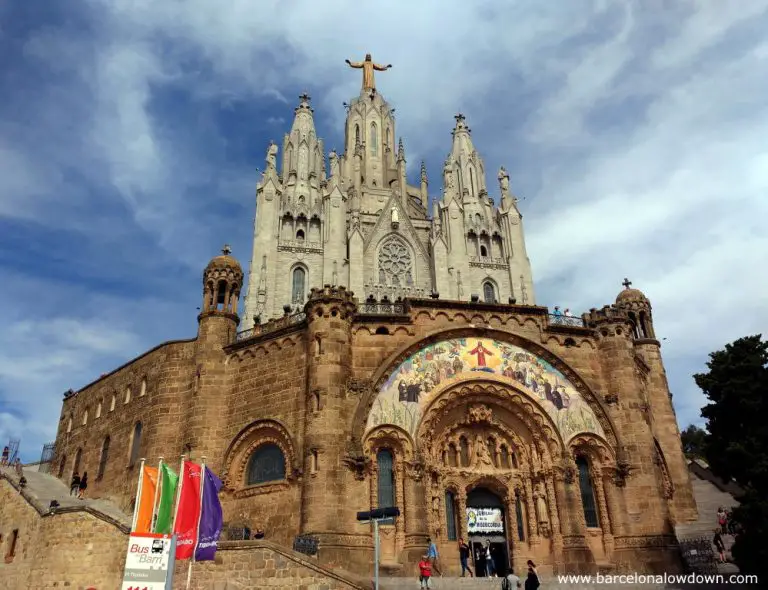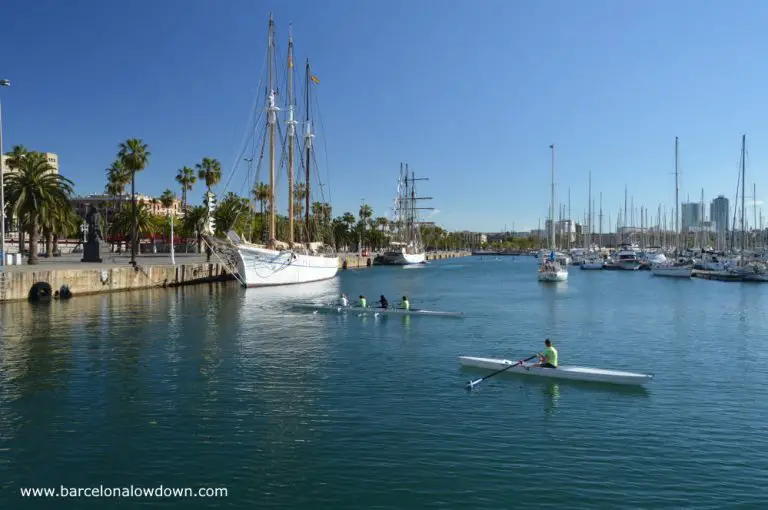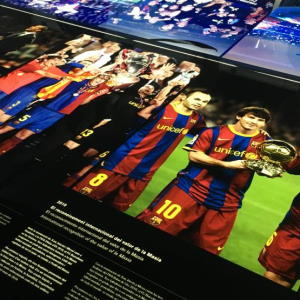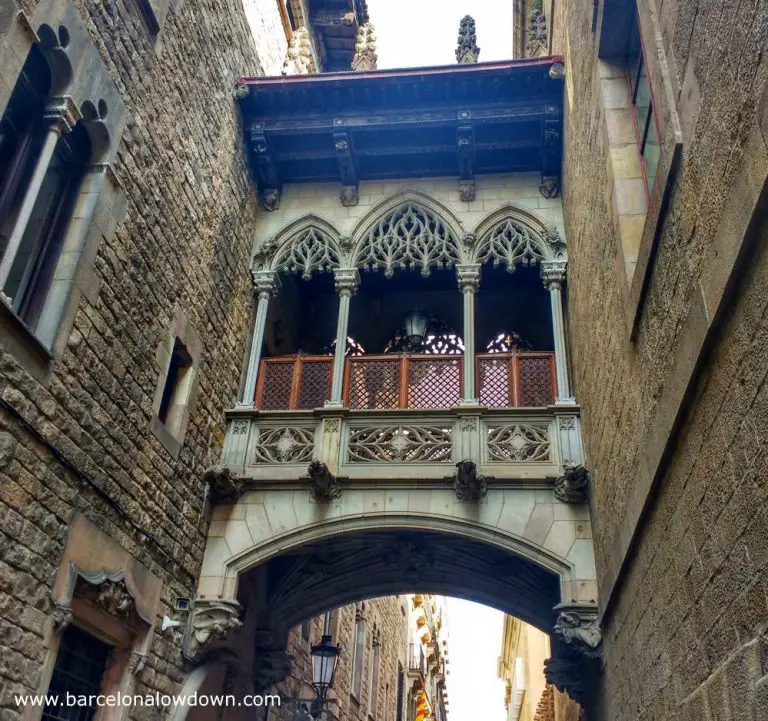Casa Bonaventura Ferrer is an impressive Modernista-style mansion on Passeig de Gràcia, close to La Pedrera and Casa Batlló. Built in 1905 and designed by the Catalan architect Pedro Falqués Urpí, the building was originally a private residence. In 2010, it was restored and converted into a luxury hotel called El Palauet Royal Suites. History…
Category: Attractions
Casa Comalat: A little-known architectural gem in Barcelona
During the nineteenth century, Barcelona’s economy was booming, thanks to a thriving textile industry and strong international trade. One outcome of this growth was the construction of a new district called l’Eixample, where affluent businessmen commissioned architects to design lavish houses in the then-popular architectural style known as Catalan Modernism, which is the local version of Art Nouveau.…
Archaeology Museum of Catalonia (Museu d’Arqueologia de Catalunya)
The Archaeology Museum of Catalonia (Catalan: Museu d’Arqueologia de Catalunya) boasts a collection of more than 50,000 objects that illustrate the region’s development from prehistoric times to the beginning of the Middle Ages. Established in 1902, the Archaeology Museum of Catalonia is one of the oldest museums in Barcelona. Initially located in the Parc de…
10 Quirky and Unusual Statues You Shouldn’t Miss In Barcelona
The streets of Barcelona are often likened to an open-air art gallery. The city’s parks, plazas, and open spaces are filled with a diverse collection of sculptures of various styles. Alongside classic monuments dedicated to historical figures, politicians, and the ruling elite, there are also many more unconventional and surprising statues that will make you…
Mercat de la Boqueria: Barcelona’s Famous Food Market
Barcelona is famous for its gastronomy, and thousands of foodies flock to the city’s restaurants every year. The vibrant food culture is fueled by a series of historic markets selling the freshest produce supplied by local farmers and fishermen. Each of the city’s neighbourhoods has its own food market, many of which are housed in…
History Museum of Catalonia (Museu d’Història de Catalunya)
As its name implies, The History Museum of Catalonia is entirely dedicated to explaining the history of Catalonia. The museum is located in the Port Vell harbour and is housed in the only remaining building from the original nineteenth-century dockyards, built during the height of the Industrial Revolution. The museum is divided into two floors.…
Basilica of Santa Maria del Pi (Visitors guide and history)
The Basilica of Santa Maria del Pi is located in the heart of Barcelona’s Gothic Quarter, near Las Ramblas and the famous Boqueria Food Market. The basilica dates back to the fourteenth century and is known for its large Rose Window, one of the largest in Catalonia. However, the main reason for visiting the basilica…
The Frederic Marès Museum (Visitors Guide)
The Frederic Marès Museum is located in the heart of Barcelona’s Gothic Quarter, in an impressive medieval building that was formerly part of the Royal Palace. The museum boasts an extensive collection of medieval sculptures as well as tens of thousands of everyday items, which provide insight into the lives of Barcelona’s upper class during…
Casa Pàdua: The Green and Red Art Nouveau House at 75 Pàdua Street
Barcelona is famous for its striking Art Nouveau architecture, which attracts millions of tourists every year to visit iconic landmarks such as the Sagrada Familia, La Pedrera, and Casa Batlló. Apart from these well-known sites, which are open to the public, hundreds, if not thousands, of other Art Nouveau buildings are scattered throughout the city,…
Basilica of Sants Màrtirs Sant Just i Pastor
The Basilica of Sants Màrtirs Sant Just i Pastor dates back to the fourteenth century and was built on the ruins of a fourth-century church, which was itself built on top of a pagan temple dedicated to the deity Mithras from Greco-Roman mythology. The church’s plain exterior, typical of Catalan Gothic architecture, belies the beauty…
Barcelona Cathedral: A Complete Visitor’s Guide
Barcelona’s magnificent Gothic cathedral dates back to the thirteenth century and is one of the city’s oldest and most historic buildings. The cathedral is famous for its ornate Neo-Gothic façade, peaceful cloister and stone gargoyles that channel water from the roof. Other highlights include the elaborately carved choir stalls and the crypt containing the remains…
The Hash Marihuana and Hemp Museum, Barcelona
The Hash Marihuana and Hemp Museum in Barcelona is the world’s largest museum that solely focuses on cannabis. The museum, which opened its doors in 2012, explores the history of cannabis and hemp, including their medicinal, cultural, industrial, and recreational uses. The museum is located in a medieval palace in the Gothic Quarter, where it…
Visiting Barcelona City Hall: Everything You Need to Know
Barcelona’s City Hall is an impressive example of Gothic architecture that has served as the local government’s headquarters since its construction in 1369. Like many other buildings in Barcelona’s Gothic Quarter, the city hall has been subject to various modifications and additions. However, despite all the changes, parts of the interior have remained unchanged since…
Casa de l’Ardiaca: The Archdeacon’s House
The Casa de l’Ardiaca is a small Gothic building tucked away in plain sight, near the main entrance to Barcelona Cathedral. The building, which is currently home to the city’s historic archive, dates back to the twelfth century when it served as the residence of the archdeacon, a high-ranking member of the clergy. Despite being…
MNAC: The National Art Museum of Catalunya (Visitors guide & tickets)
The National Art Museum of Catalunya, also known as MNAC, is located in the Palau Nacional near the Magic Fountain on Montjuïc. The museum boasts an impressive art collection spanning over a thousand years, tracing the development of art in Catalonia. The museum is famous for its impressive collection of Romanesque murals from the 11th…
The Fundació Joan Miró Art Museum on Montjuïc (Visitors guide & tips)
The Joan Miró Foundation is a museum of modern art that exhibits the works of Barcelona-born artist Joan Miró. The museum opened its doors in 1975 and was designed in collaboration between Miró and architect Josep Lluís Sert. In addition to an extensive collection of Miró’s work, the museum also contains exhibits by other contemporary…
CCCB: Centre de Cultura Contemporània de Barcelona
The Centre de Cultura Contemporània de Barcelona, or CCCB for short, is contemporary arts centre in Barcelona’s Raval neighbourhood. The centre opened in 1995 in a historic building which was once an almshouse and houses three main exhibition areas, as well as an auditorium, a bookstore, an arts cinema and a digital archive, all of…
Fundació Antoni Tàpies (Visitors guide, tickets & tips)
Situated in an impressive Art Nouveau building in central Barcelona, the Antoni Tàpies Foundation was inaugurated in 1984 to promote modern and contemporary art. The museum houses temporary exhibitions by Antoni Tàpies and other artists and an extensive library of books and journals dedicated to art. On the roof, there are two large sculptures, which…
MACBA: Barcelona’s Iconic Contemporary Art Museum
Housed in an emblematic concrete and glass building designed by Richard Meier, Barcelona’s contemporary art museum, the MACBA or Museu d’Art Contemporani de BArcelona, was inaugurated in 1995. More than just a museum, in addition to its permanent and temporary collections, the MACBA is a centre for art education and research. As the museum’s name…
Visiting the Picasso Museum in Barcelona (Info, tickets and tips)
The Picasso Museum of Barcelona (Catalan: Museu Picasso de Barcelona) is one of the city’s most popular tourist attractions and one of Spain’s best-known art museums. Founded in 1963 by Picasso’s friend and secretary Jaume Sabartés, the museum contains more than four thousand paintings, the most extensive collection of Picasso’s work anywhere in the world.…
Sant Pau del Camp: The Oldest Church in Barcelona
The church of Sant Pau del Camp (English: Saint Paul of the fields) is the oldest Christian church in Barcelona and was built between 897 AD and 910 AD. It is also one of the best examples of Romanesque architecture to be found in the city. Located in the multicultural Raval neighbourhood and off the…
The Miralles Gateway By Antoni Gaudí (Portal Miralles)
Antoni Gaudí was the architect behind many of Barcelona’s best known and most iconic buildings. From the groundbreaking design of Casa Milà to the spectacular beauty of the Sagrada Familia, there’s no denying that he left his mark on the city. But Gaudí didn’t limit himself to designing palaces and churches; he also worked on…
10 Charming Squares & Pretty Plazas in Barcelona (with map)
Barcelona’s squares and plazas are the very essence of city life. Places where locals and visitors alike come to meet friends, relax and enjoy a drink or a meal. From large imposing plazas surrounded by elegant buildings to tiny squares where children can run and play, there are literally hundreds of squares of all sizes…
Plaça de Sant Josep Oriol
Plaça de Sant Josep Oriol (St. Josep Oriol’s Square) is located next to the Santa Maria del Pi Basilica in Barcelona’s Gothic Quarter. Built on the site of one of the Basilica’s three cemeteries, the square hosts a regular artists market which takes place every weekend. Artists Market One of the delights of exploring Barcelona’s…
Barcelona’s Medieval Jewish Quarter (El Call)
Barcelona’s medieval Jewish Quarter is a small area of narrow streets and alleyways tucked away behind the Cathedral, in the oldest part of the city centre. The area was abandoned after the pogroms of 1391, almost a hundred years before the Spanish Inquisition and the expulsion of the Jews from Spain. Today, you can learn…
Basilica of La Mercè
It may not be as well known as Barcelona’s other historic churches, but the Basilica of Our Lady of Mercy (Catalan: La Basílica de la Mare de Déu de la Mercè) is a worthy addition to your list of things to see in the Gothic Quarter. The basilica’s stunning interior consists of a nave flanked…
The Church of the Sacred Heart on Mount Tibidabo
Perched at the top of Mount Tibidabo, the Church of the Sacred Heart rewards visitors with exceptional views of Barcelona and the surrounding countryside. Built between 1902 and 1961, and topped by a giant statue of Jesus, the church is an iconic feature of Barcelona’s skyline and can be seen from most parts of the…
10 Things to Do at Barcelona’s Port Vell Harbour
A short walk from the city centre, Barcelona’s Port Vell harbour is one of the most beautiful areas of the city. Popular with visitors and locals alike, and with plenty of things to see and do, it’s a great place to relax with friends and family. Here’s my list of the ten best things to…
FC Barcelona Museum and Camp Nou Stadium Tour
With a seating capacity of almost 100,000, El Camp Nou is the largest stadium in Europe and a Mecca for football fans from around the world. The Camp Nou Experience is one of the most popular tours in Barcelona, giving visitors exclusive access to areas of the stadium that are usually off-limits, including the changing…
El Pont del Bisbe: Bishop’s Bridge
One of the most photographed sights in Barcelona’s Gothic Quarter, El Pont del Bisbe (Bishop’s Bridge) was built for the Barcelona International Exposition, which took place in 1929. The bridge was designed by architect Joan Rubió I Bellver, who suggested that all non-Gothic buildings in the immediate vicinity of Barcelona Cathedral should be demolished and…

